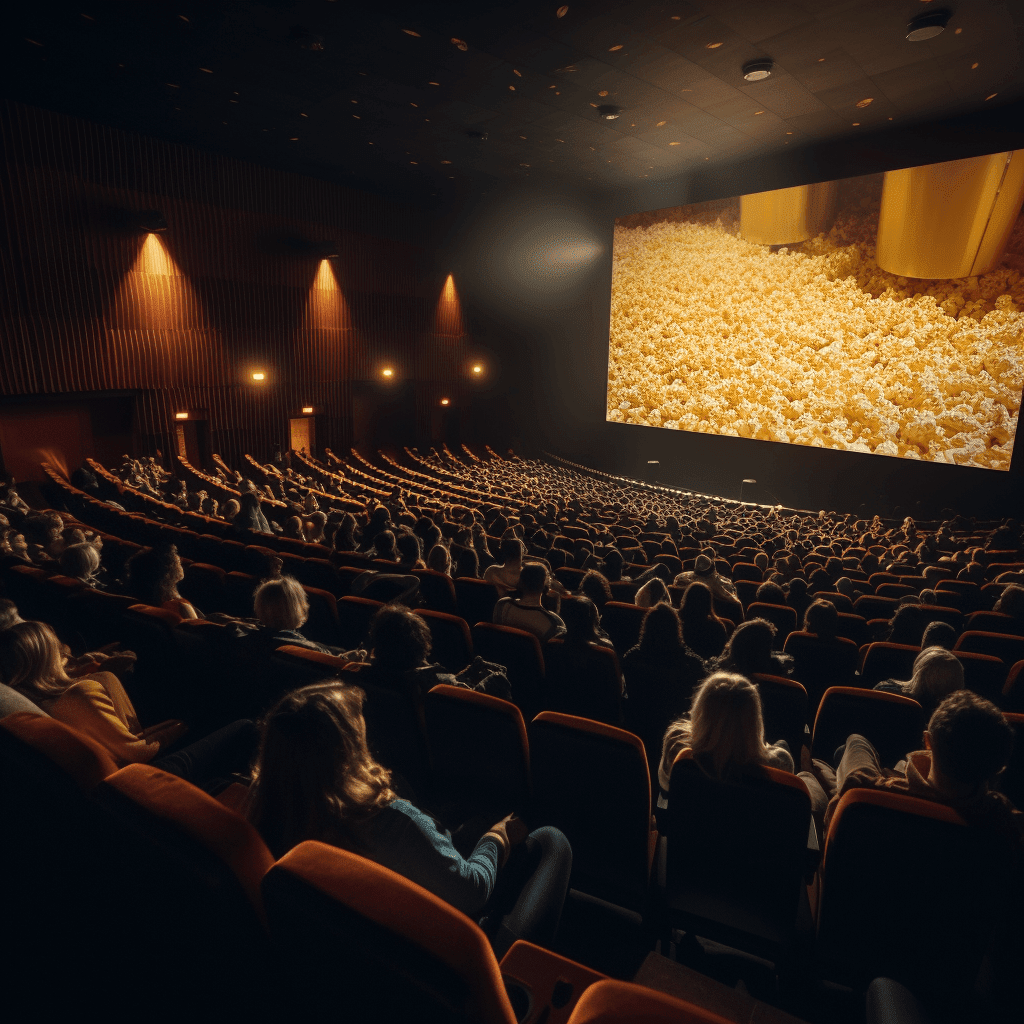What's After the Blog?
Cinema
Exploring the Legacy of Iconic Film Comedians
Dive into the legacy of iconic film comedians and discover how their timeless humor and performances have shaped the world of cinema and comedy.
July 2, 2024
Movies mentioned in this article
Exploring the Legacy of Iconic Film Comedians
Introduction: The Role of Comedy in Cinema
Comedy has always held a special place in the heart of cinema. From the early days of silent films to the talkies and into the modern digital age, the genre of comedy has continually evolved, bringing laughter and lightness to audiences around the world. Comedians in film have done more than just make us laugh; they have served as mirrors to society, often using humor to reflect on and critique the times. The importance of comedy in cinema cannot be understated—it breaks barriers, challenges norms, and provides a universal language of joy and entertainment. The legacy of iconic film comedians is not just in the laughter they provoke but also in the way they have shaped filmmaking and influenced generations of artists. Films like The Gold Rush and Modern Times, starring Charlie Chaplin, didn’t just entertain; they commented on the human condition, making Chaplin an enduring figure in the world of cinema.
The Pioneers of Film Comedy
The pioneers of film comedy set the foundation for what would become one of the most beloved genres in cinema. Charlie Chaplin, Buster Keaton, and the Marx Brothers are just a few names that became synonymous with early film comedy. Chaplin’s Tramp character, with his bumbling antics and heartfelt humanity, won hearts worldwide, making films like City Lights and The Kid timeless classics. Buster Keaton’s stone-faced, physical comedy in films like The General showcased a different style, one where the humor came from the situation and the incredible stunts. The Marx Brothers brought a blend of slapstick and witty dialogue to the silver screen, with films like Duck Soup and A Night at the Opera. These pioneers were not just comedians; they were artists who mastered the language of visual comedy, creating works that have stood the test of time. Their innovative use of slapstick, visual gags, and narrative humor laid the groundwork for all comedic films that followed, proving that comedy, in its purest form, is a powerful tool for storytelling.
The Evolution of Comedy Through Decades
As cinema evolved, so did the style and substance of comedy. The transition from the silent era to the age of talkies brought new dimensions to film comedy. The witty, fast-paced dialogue of screwball comedies in the 1930s and 1940s, as seen in classics like It Happened One Night and His Girl Friday, brought a new verbal wit to the comedic landscape. The post-war era and the rise of television brought about a change in comedy films, with a focus on more relatable, everyday situations. The 1950s and 1960s saw the emergence of comedic icons like Marilyn Monroe in Some Like It Hot and Audrey Hepburn in Breakfast at Tiffany’s, who brought charm and elegance to comedy. The late 20th century saw a diversification in comedic styles, ranging from the satirical and politically charged humor of Dr. Strangelove to the zany and absurd antics of Monty Python and the Holy Grail. Each decade brought its own flavor to comedy, reflecting the changing tastes and societal attitudes of the time, and setting the stage for future innovations in humor.
The Rise of Stand-up Comedians in Film
The latter part of the 20th century saw the rise of stand-up comedians transitioning into film, a trend that significantly influenced the comedy genre. Stand-up comedians brought a different kind of humor to cinema – one that was more personal, observational, and often rooted in real-life experiences. Richard Pryor’s raw, unfiltered style of comedy, as seen in Silver Streak and Stir Crazy, broke new ground in film comedy, tackling issues of race and society with humor and honesty. Eddie Murphy’s meteoric rise in the 1980s, with hits like Beverly Hills Cop and Coming to America, showcased his incredible charisma and comic timing, making him a household name. The transition of these comedians from the stage to the screen opened up new avenues for storytelling in comedy, blending traditional narrative structures with the personal and improvisational style of stand-up. This era marked a significant shift in the landscape of film comedy, as stand-up comedians brought their unique voices and perspectives to the big screen, influencing not just the genre of comedy but the broader spectrum of film as an art form.
The Question of Influence: “How have iconic film comedians influenced modern comedy?”
Iconic film comedians have left an indelible mark on the landscape of modern comedy. Their influence extends beyond their own era, shaping the humor and style of contemporary comedians and films. The physical comedy of Charlie Chaplin and Buster Keaton, for instance, can be seen in the works of modern-day actors like Jim Carrey, who incorporates similar exaggerated expressions and body movements. The Marx Brothers’ fast-paced and witty dialogue paved the way for the verbal humor prevalent in the sitcoms and stand-up routines of today. Furthermore, the satirical and socially conscious comedy of comedians like Richard Pryor has influenced a generation of comedians to tackle significant social issues through humor. This legacy is evident in films and TV shows that blend comedy with commentary, reflecting the impact of these pioneers on shaping not just the comedic genre but also the way humor is used as a tool for social dialogue.
Female Comedians Breaking the Mold
Female comedians in film have played a pivotal role in breaking gender barriers and redefining the scope of comedy. Historically, comedy was a male-dominated field, but female comedians have challenged this norm and made significant contributions to the genre. Lucille Ball’s impeccable comic timing and expressive facial reactions in I Love Lucy broke new ground for women in comedy, proving that they could lead and carry a comedic performance. The 1970s and 1980s saw the rise of comedians like Carol Burnett and Lily Tomlin, who brought a unique blend of humor and heart to their performances, paving the way for future generations. In recent years, actresses like Melissa McCarthy in Bridesmaids and Kristen Wiig have continued this tradition, bringing a fresh perspective and diversity to comedic roles. These trailblazing women have not only provided endless laughter but also inspired a new generation of female comedians to pursue careers in comedy, significantly impacting the genre and broadening the representation of women in film and television.
The Question of Legacy: “What makes a film comedian’s work timeless?”
The timeless nature of a film comedian’s work often lies in their ability to connect with audiences on a universal level, transcending time and cultural boundaries. Comedians like Robin Williams and Jim Carrey have achieved this through a unique blend of humor, empathy, and human insight. Their performances in films like Mrs. Doubtfire and The Truman Show respectively, showcase an incredible range of emotion, blending comedy with deeper, more relatable themes. The timeless appeal also comes from the innovativeness and originality in their comedy. Charlie Chaplin’s tramp character, for example, with his blend of humor and pathos, resonates with audiences even today because of its underlying humanity and social commentary. These comedians have created characters and narratives that are not just humorous but also reflective of the human experience, making their work enduring and relevant across generations.
Comedy in the Digital Age
The advent of the digital age has transformed the landscape of film comedy, introducing new platforms and opportunities for comedic expression. The rise of digital platforms like YouTube and streaming services has given birth to a new generation of comedians who leverage these mediums to reach a global audience. This digital era has also allowed for more diverse and niche comedic content, catering to a wide array of tastes and preferences. Films and shows released directly on streaming platforms, like The Unbreakable Kimmy Schmidt and Master of None, have found success and critical acclaim, illustrating the shift in how comedy is consumed and appreciated. Additionally, the internet has enabled a more interactive and immediate connection between comedians and their audiences, allowing for a more dynamic and evolving form of comedy. This digital revolution has not only democratized the genre but also ensured that film comedy continues to evolve and adapt, remaining as relevant and entertaining as ever.
Continue reading

What's After the Movie?
Not sure whether to stay after the credits? Find out!
Check out our other apps:
Actors
Companies
Latest Movies
© 2025 What's After the Movie. All rights reserved.



























